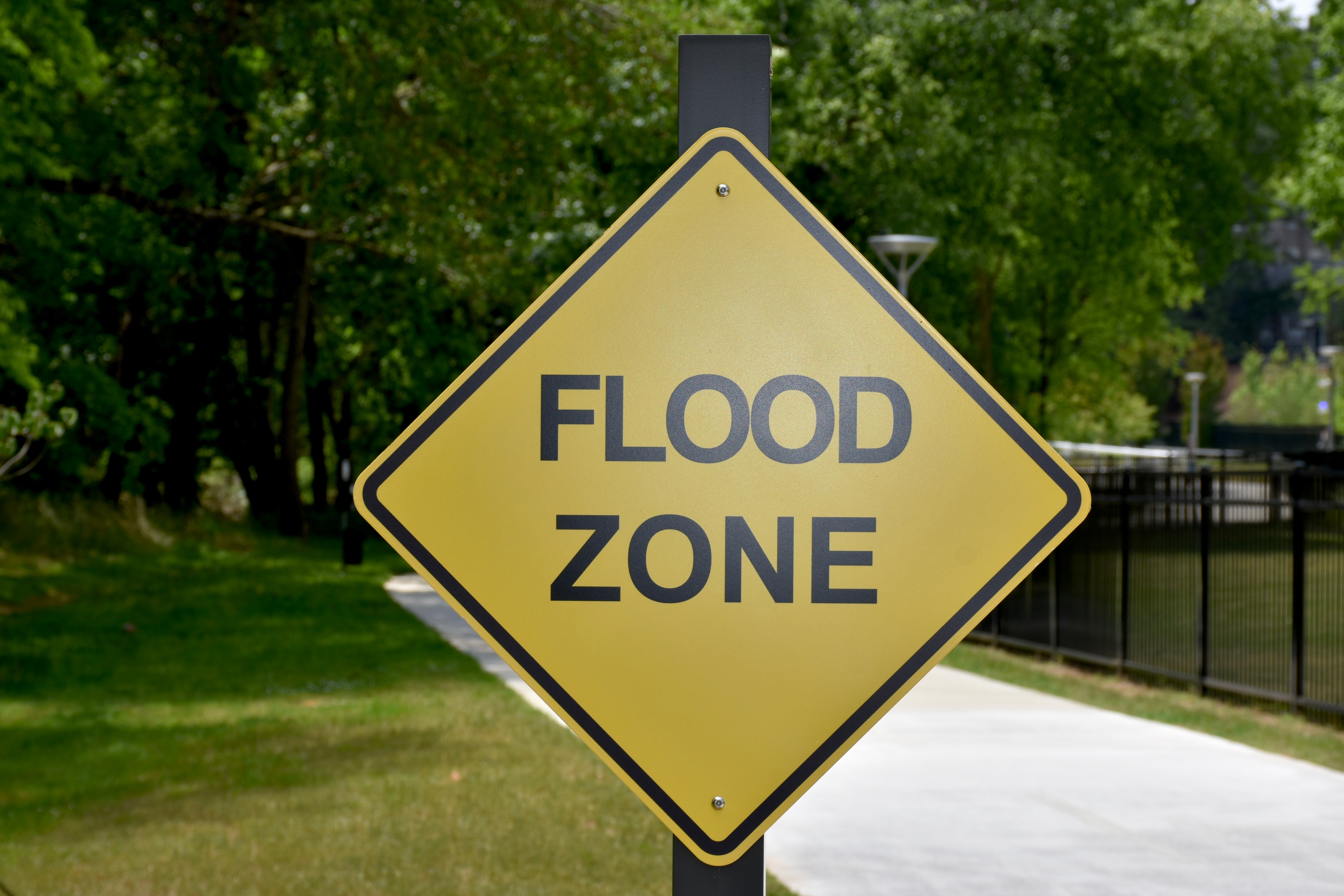Garages are often the most vulnerable part of a home when it comes to flooding. Located at ground level, they can easily accumulate water during heavy rainstorms, flash floods, or plumbing failures. We understand that the garage houses valuable tools, vehicles, and storage items that are essential to daily life. Protecting this space from water damage not only safeguards your possessions but also prevents mold growth, structural issues, and costly repairs down the road.
Whether you’re building a new garage or upgrading an existing one, these recommendations from the Garage Door and More Team will ensure you’re prepared before disaster strikes. Let’s dive in and discover how you can protect your garage, your belongings, and your peace of mind.
1. Assessing Flood Risk and Vulnerability
Before implementing any flood protection measures, it’s crucial to understand the specific risks your garage faces. Flooding can result from heavy rainfall, nearby rivers or streams rising, poor drainage, or even broken plumbing inside your home. Start by evaluating your property’s elevation relative to nearby water sources and identifying low spots where water naturally collects.
We recommend reviewing local flood zone maps provided by FEMA to determine whether your home sits in a high-risk area. Additionally, inspecting past weather records and speaking with neighbors about previous flood events can reveal patterns you might not anticipate. Pay attention to stormwater run-off from your roof and driveway, as this can divert water toward the garage if not properly managed.
Once you have a clear picture of the threats, prioritize flood protection steps based on severity. A property near a creek may require flood vents, whereas a home with poor driveway grading might just need a re-slope. By tailoring your approach, you invest your time and resources where they will have the greatest impact.
- Elevation Check: Compare garage floor height to surrounding ground levels.
- Flood Zone Verification: Consult FEMA maps for official risk assessment.
- Historical Records: Document past flood incidents and frequency.
| Risk Factor | Assessment Method | Priority Level |
|---|---|---|
| Nearby Watercourses | FEMA Flood Map | High |
| Driveway Slope | Level Tool | Medium |
| Stormwater Runoff | Visual Inspection | Medium |
By completing a thorough risk assessment, you lay the groundwork for effective flood protection. The next sections build on this foundation to deliver practical solutions tailored to your garage’s unique vulnerabilities.
Our team at Garage Door and More offers professional flood risk evaluations and customized recommendations to keep your garage safe. Contact us for an on-site assessment.
2. Sealing and Waterproofing Garage Doors
The garage door is a primary entry point for floodwaters, especially when seals and weatherstripping deteriorate over time. Properly sealing this barrier can significantly reduce water intrusion. We recommend starting with a full inspection of the bottom seal, side seals, and any gaps around the frame.
High-quality rubber thresholds and vinyl weatherstrips can be added or replaced to create a watertight seal. Make sure the threshold is fastened securely to a smooth concrete surface and that the bottom seal compresses evenly when the door closes. For side seals, install flexible vinyl molding that conforms to the door’s contours.
For additional protection, consider applying waterproof sealant to the garage floor and extending it up the walls by at least two inches. Epoxy coatings provide a durable barrier against water and chemical spills. These measures not only keep water out but also enhance the longevity of your door’s moving parts by preventing moisture-related corrosion.
- Rubber Thresholds: Install to seal the door bottom.
- Vinyl Weatherstripping: Replace aged or cracked strips on sides.
- Epoxy Floor Coating: Waterproof the concrete floor surface.
| Product | Coverage Area | Estimated Cost |
|---|---|---|
| Rubber Threshold | Garage Door Base | $50–$100 |
| Vinyl Weatherstrip | Door Sides | $20–$40 |
| Epoxy Sealant | Floor Surface | $200–$300 |
Proper sealing and waterproofing are cost-effective ways to create a strong defense against flooding. For professional installation that guarantees a perfect fit and lasting performance, rely on the Garage Door and More Team.
We handle seal replacement and floor coating with precision, ensuring that every joint and surface is fully protected against water intrusion.
3. Installing Flood Barriers and Flood Vents
For garages located in high-risk flood zones, passive flood barriers and vents offer critical protection. Flood barriers are removable or hinged panels installed across door openings to block rising water. They are typically made from aluminum or galvanized steel and can be custom-fitted to your garage’s dimensions.
Flood vents, on the other hand, allow water to flow through the structure, equalizing pressure on walls and preventing structural damage. These vents automatically open when water reaches a certain height, then close when water recedes. They help prevent wall blowouts that occur when trapped water exerts uneven pressure.
Combining barriers and vents gives you both exclusion and pressure relief, making your garage far more resilient in severe flooding events. Installation must comply with local building codes, so professional consultation is essential to ensure proper placement and operation.
- Custom Flood Panels: Fit precisely to door openings to block water.
- Automatic Flood Vents: Equalize water pressure while allowing drainage.
- Compliance Assurance: Meet local building regulations and permits.
| Solution | Function | Average Price |
|---|---|---|
| Aluminum Flood Panel | Water Exclusion | $150–$250 |
| Galvanized Steel Barrier | High-Strength Protection | $200–$350 |
| Auto Flood Vent | Pressure Relief | $75–$120 |
Properly installed flood barriers and vents can mean the difference between minor water intrusion and catastrophic structural damage. Let Garage Door and More guide you through selecting and installing the right products for your garage.
Our technicians ensure barrier fitment and vent placement comply with FEMA guidelines and local codes, providing maximum protection when it matters most.
4. Implementing Effective Drainage Solutions
Drainage systems divert water away from your garage, preventing pooling at the entrance. French drains, trench drains, and channel drains are popular options that intercept surface water and channel it safely away. Choosing the right system depends on your property layout and the volume of runoff you expect.
A French drain consists of a gravel-filled trench with a perforated pipe that collects water and carries it to a discharge point. Trench drains, installed flush with the concrete surface, capture water as it flows across the garage threshold. Channel drains are similar but feature a removable grate for easier debris removal. Proper slope grading is essential to ensure water moves in the intended direction.
Maintenance is critical for all drainage types. Debris buildup can block pipes or grates, reducing effectiveness. Regular inspections and cleanings, especially before and after heavy storms, keep your system functioning optimally.
- French Drain: Subsurface water collection and diversion.
- Trench Drain: Surface-level water interception at threshold.
- Channel Drain: Grated surface drain for easy maintenance.
| Drain Type | Installation Depth | Maintenance Frequency |
|---|---|---|
| French Drain | 12–18 inches | Biannual |
| Trench Drain | 4–6 inches | Quarterly |
| Channel Drain | 4–6 inches | Quarterly |
Effective drainage keeps standing water from overwhelming your garage. For precision installation and reliable results, trust the Garage Door and More Team’s expertise in drainage solutions.
We design and install drainage systems tailored to your property’s topography, ensuring water is directed safely away from your garage foundation.
5. Raising Electrical and Mechanical Systems
Electrical outlets, breakers, and mechanical equipment such as openers and control panels are vulnerable to water damage. Elevating these components above predicted flood levels protects both your equipment and your safety. The National Electric Code recommends mounting outlets at least one foot above expected flood levels.
We advise relocating electrical outlets to higher positions on the wall and installing floodproof receptacles with gasketed covers. For garage door openers, consider placing the motor unit on a raised platform or installing a battery backup opener that functions even if power is interrupted during flooding.
Similarly, any mechanical systems like HVAC units, water heaters, or dehumidifiers stored in the garage should be elevated on sturdy platforms or brackets. These precautions prevent water contact that can cause short circuits, corrosion, or complete system failure.
- Elevated Outlets: Mount receptacles above flood height.
- Gasketed Covers: Use weatherproof boxes for protection.
- Raised Platforms: Support mechanical equipment safely above ground.
| Component | Recommended Height | Implementation Cost |
|---|---|---|
| Electrical Outlets | 12–18 inches | $50–$75 per outlet |
| Garage Opener Motor | 24 inches platform | $150–$300 |
| Water Heater | 12 inches platform | $100–$200 |
Raising your garage’s electrical and mechanical components reduces the risk of costly replacements and electrical hazards. Garage Door and More specializes in safe relocation and waterproofing of critical systems.
Our electricians and technicians collaborate to ensure every component is installed to code and protected against flood damage.
6. Regular Maintenance and Inspections
Preventative maintenance is the final line of defense against garage flooding. Regular inspections help catch minor issues before they escalate into major problems. We recommend scheduling semi-annual checks in spring and fall to prepare for seasonal weather extremes.
During inspections, look for cracks in the concrete floor or walls, deteriorated seals around doors and windows, and signs of standing water or mold. Test drainage systems by running a garden hose and observing water flow. Check sump pump operation if you have one installed, ensuring the float switch activates the pump and the discharge line directs water away properly.
Keep a maintenance log to track repairs and identify recurring issues. This record helps technicians diagnose underlying problems more efficiently and demonstrates due diligence for insurance claims if damage occurs.
- Floor and Wall Inspection: Identify cracks and seal gaps.
- Drainage Test: Simulate rainwater flow to verify performance.
- Sump Pump Check: Confirm activation and proper discharge.
| Task | Frequency | Estimated Time |
|---|---|---|
| Seal Inspection | Semi-Annual | 30 minutes |
| Drain Cleaning | Quarterly | 45 minutes |
| Sump Pump Test | Semi-Annual | 20 minutes |
Consistent maintenance ensures that all flood protection measures remain effective. The Garage Door and More Team offers scheduled maintenance plans to keep your garage in top condition year-round.
Our technicians provide thorough inspections, minor repairs, and detailed reports to help you stay ahead of potential flooding issues.
Technician Insights: Quotes from the Garage Door and More Team
“We’ve seen countless garages flood because homeowners overlooked a simple cracked seal or clogged drain. Regular checks and professional maintenance can prevent these disasters. It’s like an insurance policy that you don’t realize you need until it’s too late. We recommend semi-annual inspections for every garage owner.”
– Garage Door and More Technician
“Installing flood vents transformed one customer’s garage in a high-risk area. During a recent storm, water levels rose but passed through the vents without causing any damage. It’s a cost-effective solution that pays dividends when severe weather hits, and it requires minimal ongoing maintenance.”
– Garage Door and More Technician
Conclusion: Partner with Garage Door and More for Comprehensive Flood Protection
Protecting your garage from flooding demands a multi-faceted approach – from risk assessment and sealing to advanced drainage and routine maintenance. Each strategy plays a vital role in keeping water at bay and safeguarding your investments. Attempting these measures on your own can lead to oversights that compromise effectiveness and safety.
The Garage Door and More Team provides end-to-end flood protection services tailored to Charlotte-area homes. We combine expert assessments, professional installations, and scheduled maintenance to deliver reliable, long-term solutions. Contact us today for a consultation and take the first step toward peace of mind when the next storm arrives.

